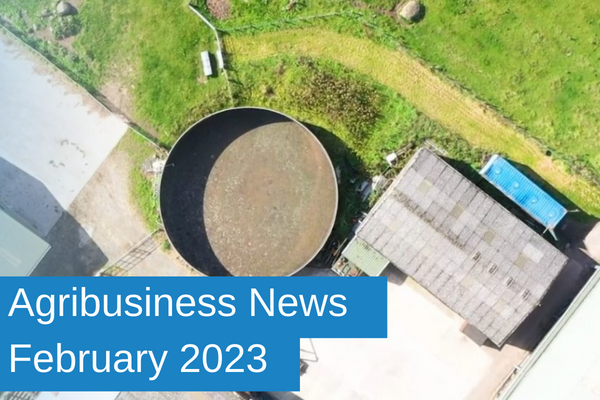Agribusiness News February 2023 – Slurry Management Regulations
2 February 2023Changes to regulations
Recent updates to slurry, manure, sewage sludge and anaerobic digestate (AD) regulations mean there are a few changes farmers and contractors now need to be aware of when applying organic fertiliser such as livestock slurry. The most recent change to take effect is the move away from splash plates and rain guns for slurry application, with a total ban on splash plates coming into effect 5 years from the date of the regulations coming into force. Precision application equipment, such as trailing shoe, dribble bars or injection, will reduce emissions, protect water quality, and could make better use of the nutrients.
Alongside slurry management and storage, other changes introduced to update The Water Environment (Controlled Activities) (Scotland) Amendment Regulations 2021 cover the making and storage of silage in bales or bulk bags and controls over the storage of liquid digestate, adding to and updating the current General Binding Rules (GBRs). Some of the regulations come into effect in stages between 2022 and 2027, giving farmers and land managers time to make any changes needed to comply.
Transitional arrangements
There are some transitional arrangements in place for those with smaller herds. Subject to the number of livestock units, some farms will still be able to use an inverted splash plate to apply slurry until 1st January 2027, giving time for everyone to move across to full precision application. Note this doesn’t apply to contractors, who should have already made the switch to low emission, precision application techniques at the start of the year.
Farms with less than 100 milking cows, or less than 200 beef cattle livestock units, can take advantage of this transitional period, being able to use an inverted splash plate until 1st January 2027. For pig enterprises, its less than 800 fattening pigs or 800 sows to qualify. It’s worth noting that these threshold numbers don’t distinguish between those on slurry and those on straw courts; the cut-off considers total livestock numbers on the farm. For those questioning what qualifies as a ‘beef cattle livestock unit’, under these regulations, beef cattle 2 years and older are classed as a single unit, whereas from birth to 2 years the animal is classed as 0.5 of a unit.
The RAMS map
All farms applying slurry and manure should have a RAMS (Risk Assessment for Manures and Slurry) map in place. The RAMS map should clearly show no-spread, high, medium and low risk sites for organic fertiliser applications. The recent updates mean that your RAMS map should also now include the location of field heaps, plus field sizes, but other than that, the information you include in your RAMS map is broadly the same. The person applying slurry on farm must have sight of the RAMS map before spreading and be aware of the no-spread zones, for example keeping a 10m buffer around watercourses. This buffer may need to be increased on sites sloping towards a watercourse.
Reducing slurry volume
Another consideration is the amount of slurry produced over a 22-week housed period (26 weeks for housed pigs), including other additions entering the system, and how much storage is required. Rainfall, collection from dirty yards and silage pits all need to be factored in, but taking a closer look at these inputs may show areas for reduction and ultimately free up storage space for slurry.
Funding towards slurry storage
Scottish Government have announced that funding to support slurry storage will be included in the current round of their Agri-Environment and Climate Scheme (AECS) funding for 2023, closing on 24th March 2023. For further details see the AECS page or speak to your local Agricultural Consultant.
In summary:
- High trajectory splash plates and rain guns can no longer be used to apply slurry.
- Use of inverted splash plates could still be an option for farms with smaller livestock numbers.
- Farms applying organic fertiliser such as slurry, manure or digestate must have a RAMS map.
- Know the Rules factsheets highlight the requirements under the updated regulations – most of this is already good farming practice but provides a useful recap.
- Funding is available towards additional slurry storage via AECS; the scheme closes 24th March 2023.
Further information
The Farming and Water Scotland website hosts the updated ‘Know the Rules’ factsheets which include slurry storage requirements (Factsheet 1), organic fertiliser application (Factsheet 8) and a ‘how to’ guide to drawing up your own RAMS Map (Factsheet 9). Follow the initiative on Facebook and Twitter @FarmWaterScot to keep up to date.
There is also a range of information on Scotland’s Farm Advisory Service (FAS), alongside access to the free FAS advice line.
Farming and Water Scotland is a partnership approach between SAC Consulting and SEPA funded by Scottish Government, to help farmers keep on the right side of the regulations around protecting water quality.
Sign up to the FAS newsletter
Receive updates on news, events and publications from Scotland’s Farm Advisory Service

